
Copernical Team
Ariane 6 launches: Robusta-3A for weather reports and radiation robustness
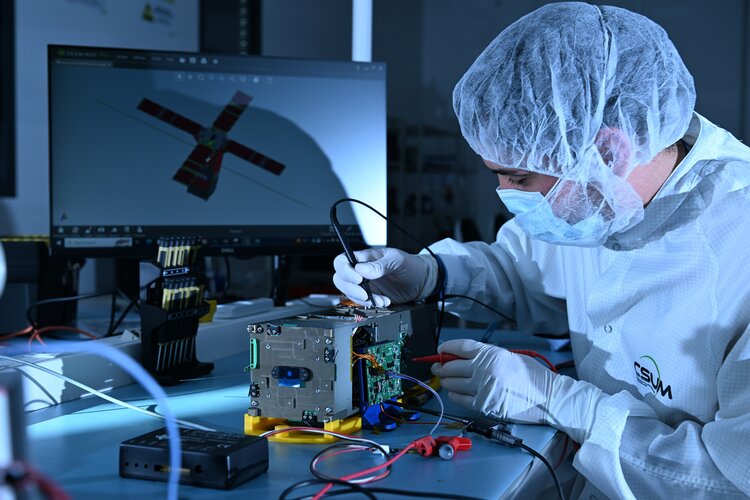
Proba-2 sees the Moon eclipse the Sun
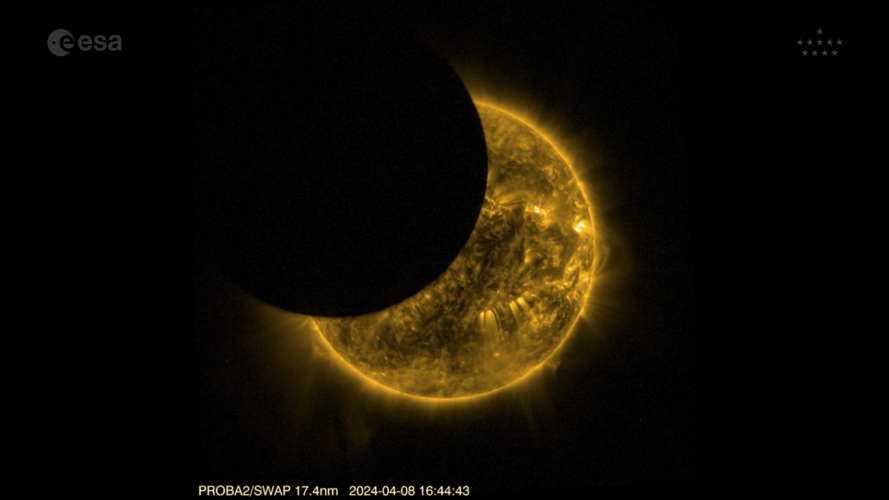 Video:
00:00:31
Video:
00:00:31
ESA’s Proba-2 captured two partial solar eclipses on 8 April 2024.
A solar eclipse occurs when the Moon passes between Earth and the Sun, totally or partially blocking the Sun from Earth’s point of view. On 8 April, lucky viewers across North America witnessed the Moon blocking out the Sun in its entirety for a few minutes, while those north and south of the ‘total eclipse path’ witnessed a partial eclipse.
Throughout the eclipse period, the Moon crossed Proba-2’s field of view twice, appearing as a partial solar eclipse. The satellite flies around 700 km above Earth’s
Total solar eclipse wows North America. Clouds part just in time for most
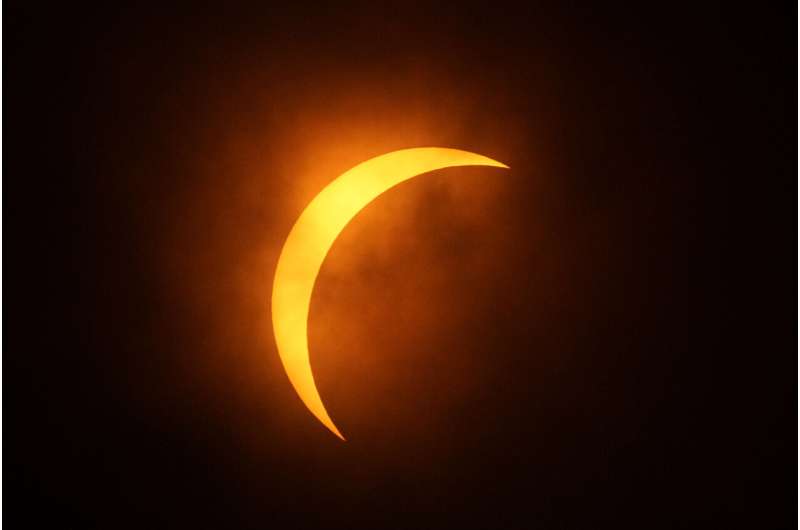
After beholding the midday darkness of a total solar eclipse that raced across the continent, thousands of spectators in New England were stuck seeing only brake lights Monday night as highway traffic backed up for hours.
Crowds of motorists leaving remote northern New Hampshire in the late afternoon clogged local roads leading to Interstate 93, which they found also thronged by cars inching southward. By midnight, some drivers had traveled only 50 miles (80 km) in nine hours.
The New Hampshire Department of Transportation urged patience and said there were about 22,000 more vehicles visiting the tiny state compared to the same time last year. Heavy traffic was also reported in Vermont and Massachusetts.
Can't get enough of the total solar eclipse or got clouded out? Here are the next ones to watch for
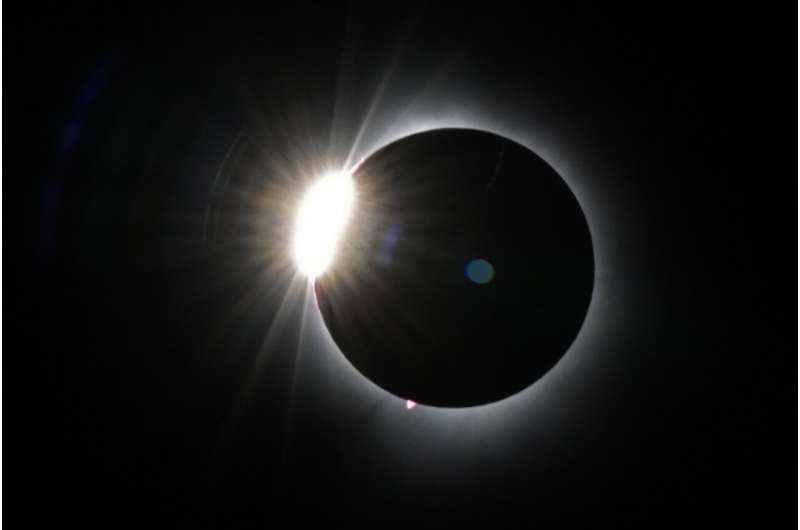
Whether you saw the moon completely block the sun, were foiled by cloudy weather or weren't along the path of Monday's total solar eclipse, there are still more chances to catch a glimpse.
Here's what to know about upcoming solar spectacles:
When is the next total solar eclipse?
Total solar eclipses happen about every year or two or three, due to a precise alignment of the sun, moon and Earth.
'I cried a little': from Texas to Canada, the awe and beauty of solar eclipse
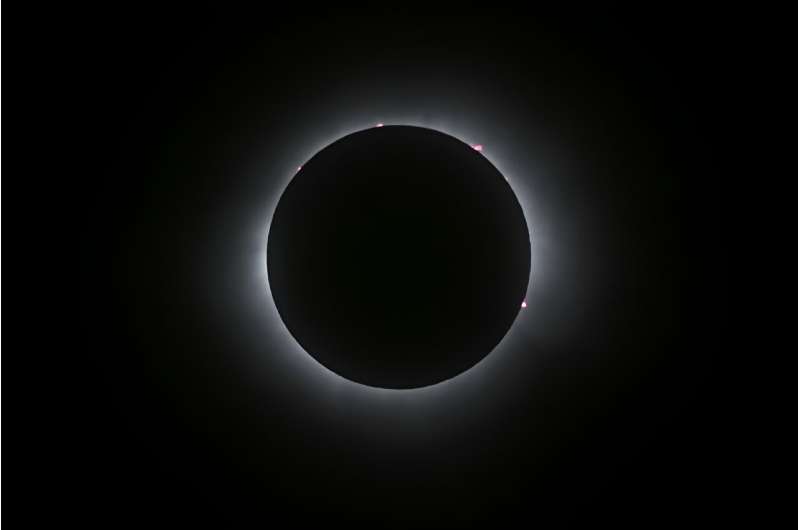
The day died and was reborn a few minutes later Monday in the southern United States. There were hugs, tears and gasping as people watched the moon fully eclipse the sun and briefly plunge the world into darkness.
About 2,000 people flocked to Ingram in the southern US state of Texas, a small city in the "path of totality" where the solar eclipse could be observed in its entirety.
Spread on mattresses on the grass, sipping wine comfortably from folding chairs or peering into large telescopes, the viewers, their eyes covered by special protective glasses, celebrated each time the gray clouds parted, letting them enjoy the wonder.
"Three, two, one!" a man shouted.
And there was the moon, a black orb completely covering the sun, with only tiny slivers of light escaping from the edges.
ESA chooses technologies for future space transportation
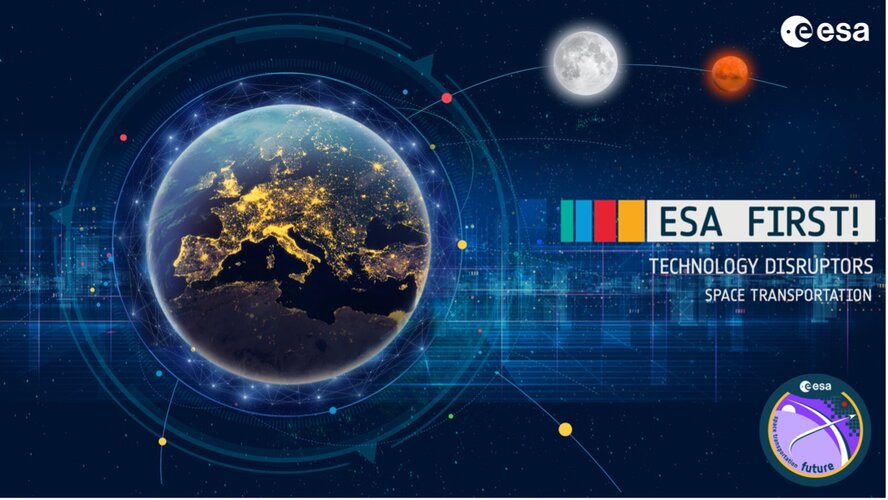
ESA supports and accelerates disruptive technologies that will best meet ESA’s future space transportation needs for the 2025–2040 period. What comes next for top-ranked proposals?
Total solar eclipse seen from space
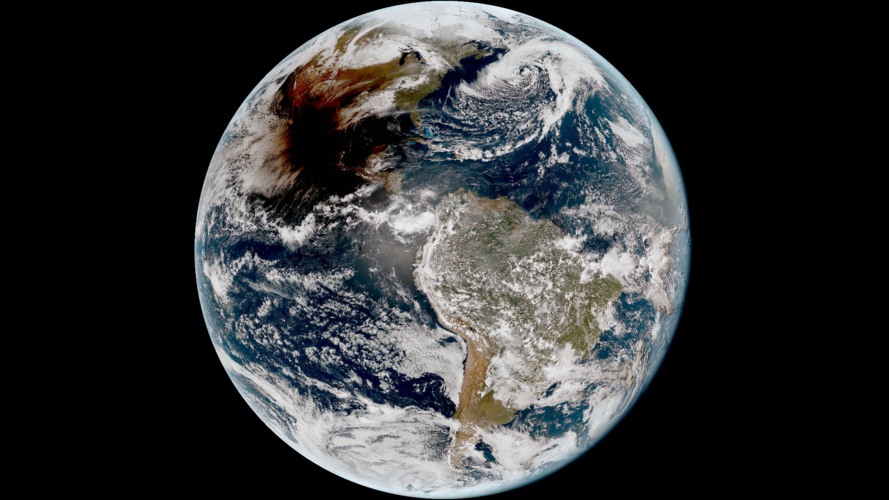 Video:
00:00:07
Video:
00:00:07
A total solar eclipse swept across North America yesterday, blocking out the Sun momentarily with parts of the continent plunged into darkness. Geostationary satellites orbiting 36 000 km away captured images of the rare celestial event.
These images, captured by the Geostationary Operational Environmental Satellite (GOES-16), captured the moon’s shadow moving across North America from approximately 16:00 to 23:00 CEST (15:00 to 22:00 BST.)
A total solar eclipse occurs when the Moon passes between the Sun and Earth and, for a short period, blocks the face of the Sun, save for a visible ring of light, known as
Euclid mission team honoured with Space Foundation Award
 Image:
Image:
The Euclid mission team was awarded this year’s Space Achievement Award by the Space Foundation, a non-profit organisation founded in 1983 to foster collaboration across the global space community. ESA Director General, Josef Aschbacher (centre), and ESA Director of Science, Carole Mundell (right), collected the prize at the Space Symposium in Colorado Springs, USA, on 8 April at 18:00 MDT (9 April at 2:00 CEST).
The Space Foundation recognised the partnership between ESA and the Euclid Consortium for their forward-thinking approach to global collaboration and team work to advance humankind’s understanding of the Universe.
Euclid is a
OpenAI's Sam Altman declared billionaire by Forbes
 Sam Altman, the CEO of ChatGPT creator OpenAI, has become a billionaire, Forbes said Monday.
Altman, who became the face of the global AI frenzy when his company released ChatGPT in 2022, cracked the magazine's list of billionaires in the 2,692nd position.
The financial news outlet said that Altman's wealth came mainly from his investments in startups, such as Reddit, which was recently
Sam Altman, the CEO of ChatGPT creator OpenAI, has become a billionaire, Forbes said Monday.
Altman, who became the face of the global AI frenzy when his company released ChatGPT in 2022, cracked the magazine's list of billionaires in the 2,692nd position.
The financial news outlet said that Altman's wealth came mainly from his investments in startups, such as Reddit, which was recently HawkEye 360 prepares dual satellite clusters for spring SpaceX launch
 HawkEye 360 Inc., a prominent defense technology company specializing in space-based radio frequency (RF) data and analytics, has announced the upcoming spring launch of its clusters 8 and 9. This launch marks the company's first simultaneous placement of two satellite clusters into orbit. The six satellites of clusters 8 and 9 will be launched aboard SpaceX's Bandwagon-1 Rideshare mission from
HawkEye 360 Inc., a prominent defense technology company specializing in space-based radio frequency (RF) data and analytics, has announced the upcoming spring launch of its clusters 8 and 9. This launch marks the company's first simultaneous placement of two satellite clusters into orbit. The six satellites of clusters 8 and 9 will be launched aboard SpaceX's Bandwagon-1 Rideshare mission from 
